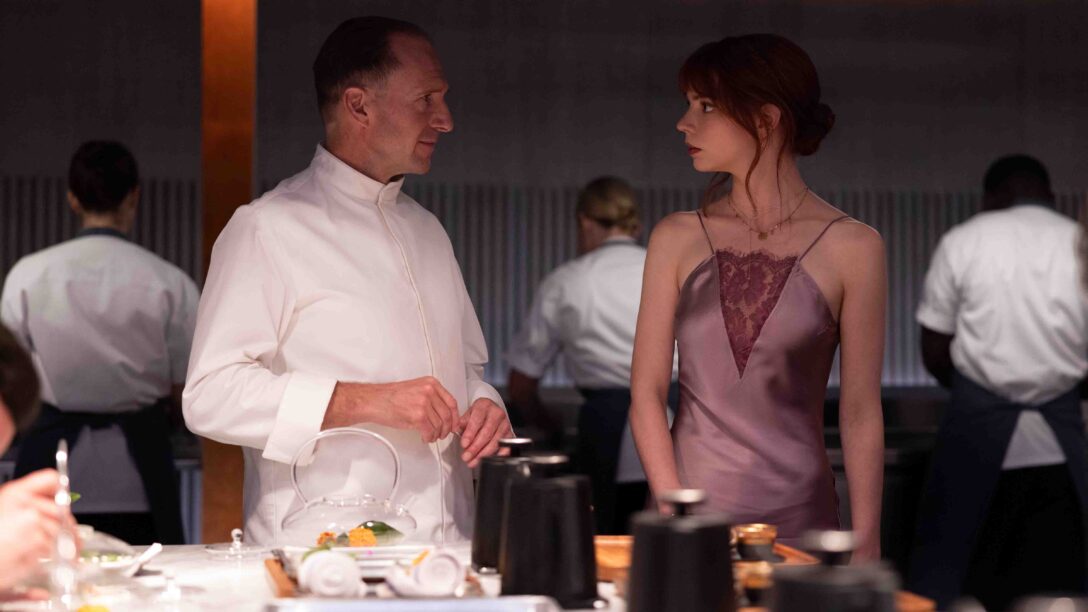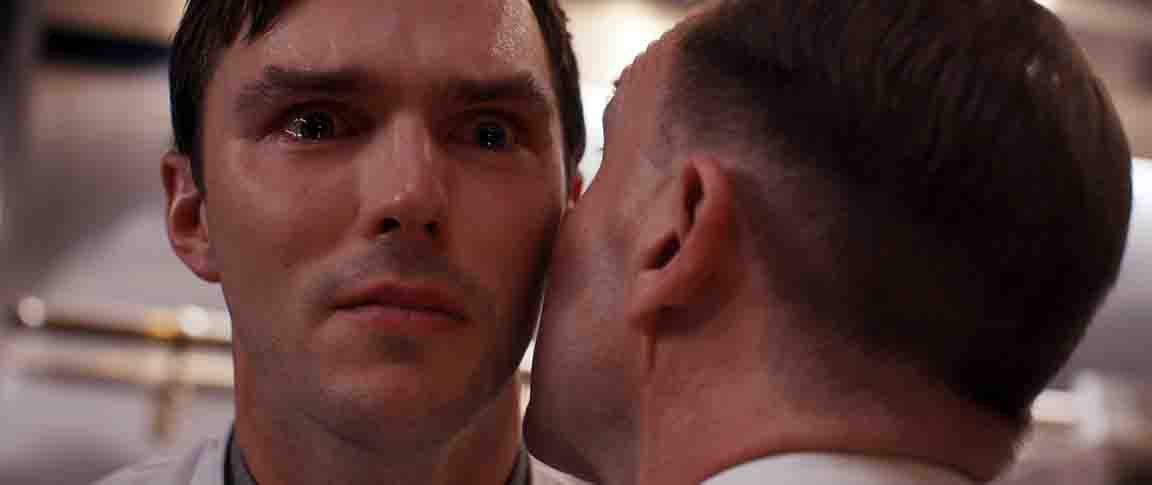“The greatest foe to art is luxury, art cannot live in its atmosphere.” — William Morris, The Beauty of Life.
THERE’S BEEN A lot of talk about how very black the black comedy-horror film The Menu is, how brutal—how like ‘Parasite’ and other recent satires of class rage it is, and how savage an indictment of the emptiness of wealth and luxury (“An opera of humiliation, self-loathing and revenge”—the New York Times…“Deliciously mean”—Vulture…“Revenge is served hot in delicious haute cuisine satire”—the Guardian). But these readings miss the point of the film, which was released in November in cinemas, and is now available for streaming on Disney+ in the UK, and HBO in the US.
The Menu is a tragedy, full of tenderness and love toward art and craftsmanship, and real mourning at the failure of the artists of the 20th century to have understood in time that all the passion in the world, however focused and concentrated in steadfast dedication to a noble purpose, would never bring about the first real Enlightenment. It wouldn’t be enough to turn the tide of greed and brutality. Nobody saw how enslaved we were to the machine until it was too late, having earned nothing more by our obsessive dedication than maybe a cape of marshmallows and a chocolate hat to wear into the fire, like the sad victims of privilege in the movie submit to wearing at the end, not having realized they themselves were part of the cosmic dégustation until it was much, much too late.
There was a time when Progress—limitless, egalitarian, promising prosperity and safety for all the world’s creatures—seemed as inevitable as disaster does now. But as all us older late-stage capitalists can now plainly see, that incrementalist fantasy was always a sham, and the whole enterprise corrupt and poisoned from the start; there was nowhere to go but where we find ourselves now, with the planet and its creatures and all its riches tortured, dug up, sold for parts, and ruined, maybe for good, by a whole gang of civilizational asset strippers over centuries or millennia.

Enter, then, Ralph Fiennes, in the role of chef Julian Slowik, who’s assembled a wildly unpleasant group of rich people in his famous island restaurant, where, it very weirdly emerges, they will all soon die. But Slowik isn’t a villain, or even really a murderer. He’s a grief-stricken artist whose life’s purpose has gone out like a candle in the sick realization that the world is doomed, and that he and his colleagues, who had all dedicated themselves to the same exacting craft, were deceived, and had been deceived all along; that the high station he’d reached, and all the beauty he’d sought and made, were in the service of cruelty, emptiness, and venality. Believe me, a lot of older people feel that way now.
“Why didn’t you try to escape?” Slowik asks his doomed guests, before the end. “You probably could’ve.” (Why didn’t Exxon tell the truth about the coming climate nightmare in the 1970s? Why didn’t Sandra Day O’Connor stop George W. Bush from stealing the 2000 election? Why did Bolsonaro, and Trump, and Manchin and Sinema and Xi and Modi and the Texan oil barons, et al., sell the whole planet down the river? )
But then, unexpectedly, deep within Slowik’s darkness there appears a darkly lovely, small shimmer of possibility.
The film’s whole meaning is in the glowing smile of the young Slowik in an old framed black and white photograph that appears late in the film; the chef is a beautiful teenager at the threshold of life; he is holding a broad spatula upon which a hamburger sits, and a plaque affixed to the frame names him Hamburger Howie’s “Employee of the Month.” The hero of the film, the fresh, young Erin, played by Anya Taylor-Joy, catches sight of this photograph by chance, and sees also the real tragedy of Slowik; sees the reason, perhaps, for the evening’s events, and the possibility that some faint shred of the beauty and happiness she could see in him might still have a chance. The possibility of redemption enters her mind then, and it enters his a little later on, through her desperate and yet compassionate offices. (Was the screenwriter thinking, as I did then, of Kafka’s joke: “There is hope, but not for us”?)
There’s a lot more to say about disillusionment and defeat, obsession, the pathetic desire of certain women to join the boys’ club, the mortifying thirst for a scrap of praise from the celebrated and beautiful. The trappedness of obsession with work. And on the surface of the story, the downright sadness of the luxury world, knowing what we know.

For someone in middle age, like me, the best hope I find in each day is in the knowledge of my own failures; if I was so wrong at twenty, at thirty, at forty, surely the odds that I’m still wrong (about total catastrophe, this time) must be really excellent? Without question the young people I know are smarter, less deceived, and more skeptical of authority than I was at their age.
That’s how Fiennes, as Slowik, the representative of my own generation—resigned himself, to the flames that are inevitably coming for us, and to the fate we deserve—acknowledges that there might still be a way out for the young. His release of Erin, the unexpected rekindling, for a moment, of the old pleasure and delight of Hamburger Howie’s, is a signal that those who are just starting out might have still a chance to redeem the world we helped ruin, provided they can create a culture that really nourishes everyone, and veer away from our suicidal road.
Thank you for visiting POPULA! Add your email here to receive our newsletter!






